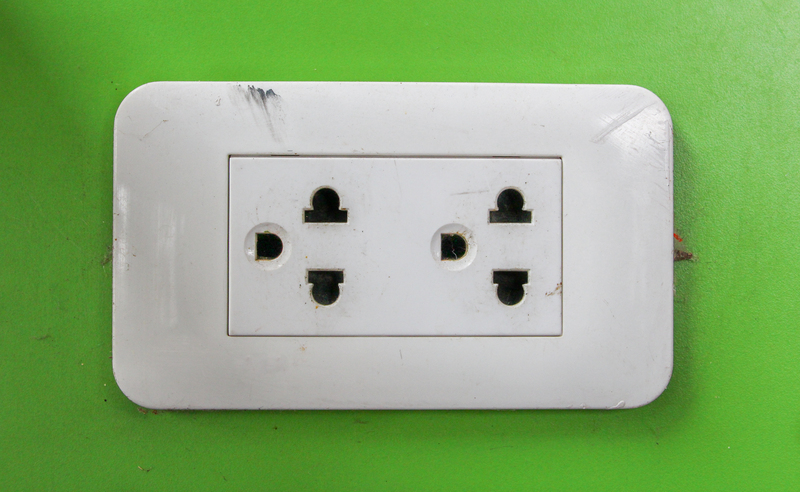Conquer Mould on Window Sills: Expert Advice
Posted on 27/09/2025
Conquer Mould on Window Sills: Expert Advice
Mould on window sills is a common and persistent problem faced by homeowners and tenants. Not only does it compromise the aesthetic appeal of your home, but it can also pose significant health risks to you and your family. If you've noticed black spots, musty odors, or discoloration around your windows, you're likely dealing with a mould infestation. In this in-depth guide, we'll provide expert advice to conquer mould on window sills, explore the underlying causes, preventative measures, cleaning strategies, and answer frequently asked questions relating to mould removal and prevention.

Understanding Mould on Window Sills
Before diving into solutions, it's important to understand what mould is and why it often thrives on window sills. Mould is a type of fungus that forms in damp, humid environments. Window sills are prime real estate for mould because condensation often accumulates there, especially in rooms with poor ventilation.
- Common moulds: Black mould (Stachybotrys chartarum), Aspergillus, and Cladosporium are frequent offenders on window sills.
- Health concerns: Mould spores can trigger allergies, respiratory problems, and irritate skin, eyes, and throat.
- Structural damage: Untreated mould will damage paint, wood, and even the structure of your window frames over time.
Why Does Mould Grow On Window Sills?
The Science Behind Window Sill Mould
The main factors contributing to mould growth on window frames and sills are:
- Moisture: Condensation from temperature differences--especially in winter--creates a wet environment that supports mould development.
- Limited Airflow: Poor ventilation allows moisture to linger.
- Organic Material: Dust, dirt, and paint provide "food" for mould spores.
If your window sills are prone to condensation, you're at higher risk for frequent mould problems, particularly in kitchens, bathrooms, and bedrooms.
How to Prevent Mould on Window Sills
Proactive Steps to Keep Your Sills Mould-Free
Prevention is always preferable to treatment when dealing with mould. To effectively stop mould on window sills and frames, consider these practical measures:
- Improve Ventilation: Ensure rooms are well-ventilated by opening windows daily or using extractor fans in high-humidity areas.
- Control Humidity: Keep humidity below 60% with a dehumidifier, especially in colder months.
- Wipe Down Surfaces: Regularly clean window sills, frames, and glass to remove condensation and dust buildup.
- Insulate Windows: Double-glazing or draft excluders can reduce the temperature difference and minimize condensation.
- Seal Leaks: Fix any draughts, leaks, or damage to windows and their frames to stop water ingress.
- Choose Mould-Resistant Paint: Use anti-mould or mildew-resistant paint when redecorating your window frames and sills.
How to Remove Mould from Window Sills: Step-by-Step Guide
Safe and Effective Mould Removal Solutions
If you already have mould on your window sills, timely removal is essential to limit health risks and prevent further spread. Follow these expert steps to safely eliminate mould:
-
Gather Supplies:
- Rubber gloves, goggles, and a mask
- Disposable towels or cloths (do not reuse)
- Spray bottle with white vinegar or a shop-bought mould remover
- Warm soapy water
- Soft bristle brush or old toothbrush
- Bin bags for disposal
-
Prepare the Area:
- Open windows for ventilation.
- Cover nearby surfaces to prevent mould spore spread.
-
Initial Clean:
- Wipe away visible mould with a disposable towel dampened with vinegar or mould remover.
- Repeat until no visible mould remains.
-
Scrub the Surface:
- Use soapy water and a soft brush to scrub the area, focusing on nooks and crannies.
- Be gentle to avoid damaging painted surfaces or wood.
-
Rinse and Dry:
- Wipe down the window sill and frame with a clean, damp cloth.
- Dry thoroughly with a towel to remove any moisture.
-
Dispose of Waste:
- Seal used towels and gloves in a bin bag and discard to prevent spore recontamination.
-
Prevent Future Mould:
- Apply a mould-resistant sealant or paint to the affected area after ensuring it's fully dry.
Natural vs Chemical Mould Removal Solutions
Which is Best for Your Window Sills?
There are various options when choosing how to get rid of mould on window frames and sills. Both natural and chemical solutions have their pros and cons:
- White Vinegar: A natural, non-toxic mould killer. Safe for most surfaces, kills up to 82% of mould species, and can prevent regrowth.
- Baking Soda: Great for absorbing moisture and deodorising. Mix with water to create a safe scrubbing paste.
- Hydrogen Peroxide: Effective on tough mould stains. Use a 3% solution for safety.
- Commercial Mould Removers: Typically stronger and faster-acting. Always read instructions and ventilate the room well.
- Bleach: Kills mould spores but can damage some surfaces and is a harsh chemical. Use with caution and never mix with ammonia.
Tip: Test any solution on a small area first to check for adverse reactions or discoloration.
When to Call a Mould Remediation Professional
Sometimes, DIY removal isn't enough. If any of the following apply, consult a certified mould professional:
- The affected area is larger than 1 square meter
- Mould returns soon after cleaning
- You or someone in your home experiences persistent allergy or asthma symptoms
- The mould damage is under or inside the window sill or frame, indicating hidden growth
Professionals use specialized tools and non-toxic chemicals to completely eradicate mould from window sills and surrounding structures. They can also help identify the root cause so the problem doesn't come back.
Proper Window Maintenance for Mould Prevention
Ongoing maintenance is key to keeping window sill mould at bay. Integrate these habits into your regular routine:
- Clean up condensation every morning: Especially important in colder months.
- Keep sills free of clutter: Avoid keeping plants, books, or other items on window sills that trap moisture.
- Repair cracked paint or sealant: Keep an eye out for signs of wear and promptly repair to prevent water ingress.
- Monitor humidity: Use a hygrometer to ensure indoor humidity levels stay low.
- Inspect for signs of leaks: On rainy days, check windows for leaks or puddles.
Additional Tips for Humid Areas
If you live in a high-humidity climate, consider these extra precautions:
- Run a dehumidifier, especially in bedrooms and living rooms.
- Keep lids on cooking pots and run extractor fans when cooking or bathing.
- Position furniture to allow airflow near windows.
- Weatherproof your windows before winter.

FAQs: Mould on Window Sills
Is Mould on My Window Sill Dangerous?
Yes. Even small amounts of window mould can release spores that aggravate allergies, asthma, and other respiratory conditions. Prolonged exposure may lead to wider health complications, particularly for children, the elderly, and those with weakened immune systems.
What is the Best Way to Remove Mould from Wood Window Sills?
Mix equal parts white vinegar and water, spray on the affected area, let it sit for an hour, then scrub gently with a soft brush. Dry thoroughly. For persistent issues, consider sanding and repainting with mould-resistant paint.
Can I Paint Over Mould?
No. Painting over mould will not solve the problem. The mould will continue to grow beneath the paint, eventually causing the new paint to peel. Always remove all visible mould and allow the surface to fully dry before repainting.
Will a Dehumidifier Stop Mould on Window Sills?
A dehumidifier will help control humidity, a major contributor to window sill mould. However, it's just one part of a comprehensive prevention strategy.
How Often Should I Check My Window Sills for Mould?
Check window sills and frames for condensation, mould, or odd smells at least once a week, especially during colder or wetter months.
The Bottom Line: Ensure a Mould-Free Home
Conquering mould on window sills requires a multi-layered approach: prompt removal, careful drying, root-cause resolution, and ongoing preventative care. By understanding the science behind mould growth, following expert cleaning and prevention steps, and acting quickly at the first sign of trouble, you can safeguard your home and the health of your loved ones.
- Monitor and maintain your windows routinely to prevent future mould outbreaks.
- Educate your household about the dangers of mould and how to keep sills dry.
- Use mould-resistant materials and modern ventilation options whenever possible.
For persistent or severe cases, never hesitate to call a qualified mould removal professional--sometimes, expertise is the fastest route to a safe and beautiful mould-free home.
Take Action Today
Don't let mould take over your living space. Act quickly, implement preventative habits, and enjoy a healthier, fresher environment free from unwanted window sill mould.
If you found this guide on how to conquer mould on window sills helpful, share it with friends and family, and start your journey to a cleaner, healthier home today!



